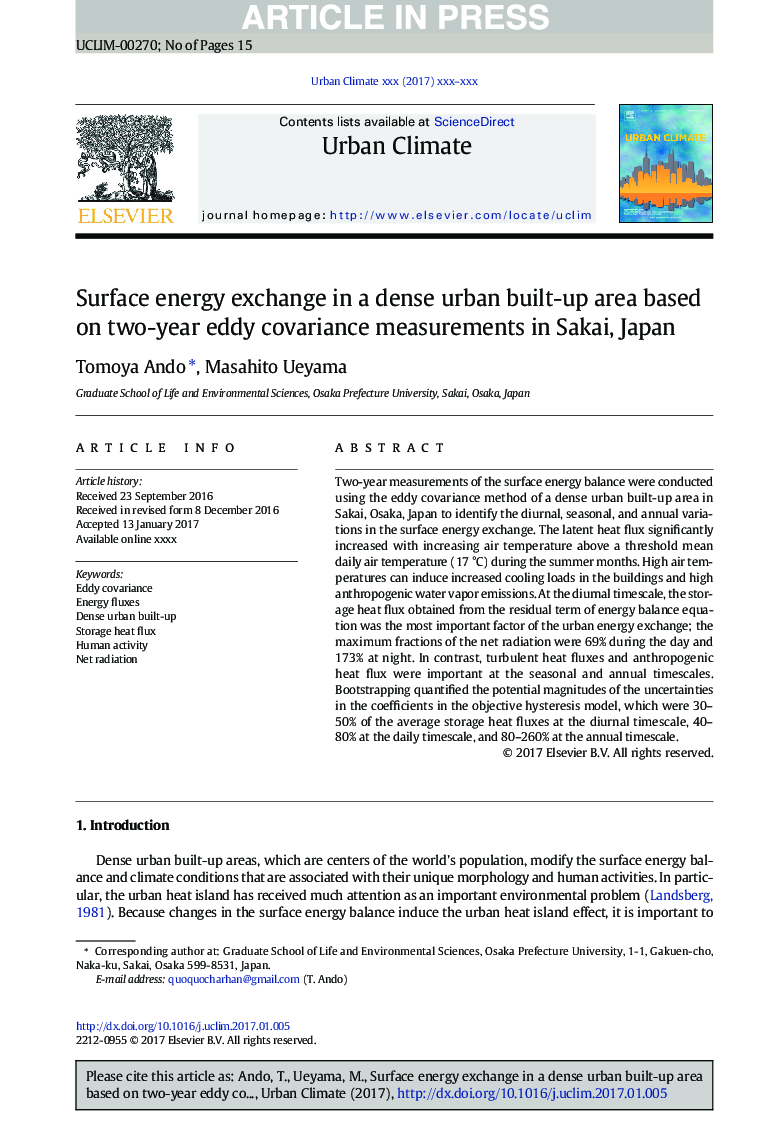| Article ID | Journal | Published Year | Pages | File Type |
|---|---|---|---|---|
| 4762381 | Urban Climate | 2017 | 15 Pages |
Abstract
Two-year measurements of the surface energy balance were conducted using the eddy covariance method of a dense urban built-up area in Sakai, Osaka, Japan to identify the diurnal, seasonal, and annual variations in the surface energy exchange. The latent heat flux significantly increased with increasing air temperature above a threshold mean daily air temperature (17 °C) during the summer months. High air temperatures can induce increased cooling loads in the buildings and high anthropogenic water vapor emissions. At the diurnal timescale, the storage heat flux obtained from the residual term of energy balance equation was the most important factor of the urban energy exchange; the maximum fractions of the net radiation were 69% during the day and 173% at night. In contrast, turbulent heat fluxes and anthropogenic heat flux were important at the seasonal and annual timescales. Bootstrapping quantified the potential magnitudes of the uncertainties in the coefficients in the objective hysteresis model, which were 30-50% of the average storage heat fluxes at the diurnal timescale, 40-80% at the daily timescale, and 80-260% at the annual timescale.
Related Topics
Physical Sciences and Engineering
Earth and Planetary Sciences
Earth and Planetary Sciences (General)
Authors
Tomoya Ando, Masahito Ueyama,
